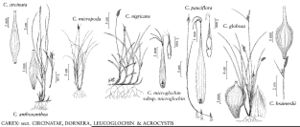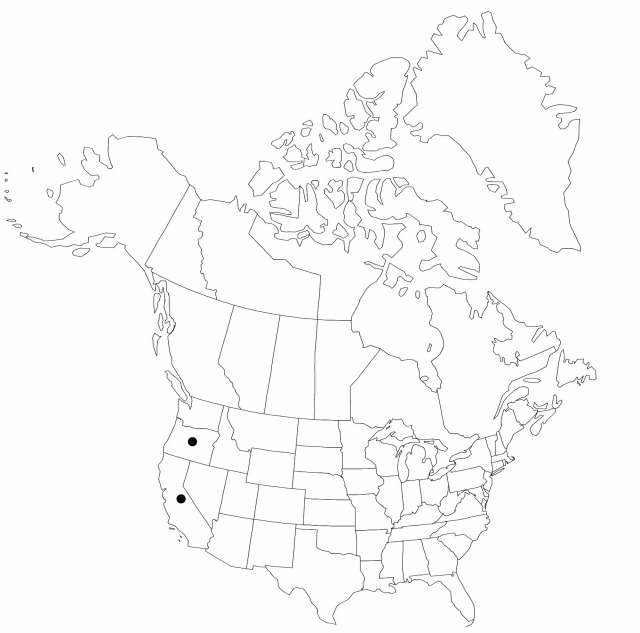Carex brainerdii
Bull. Torrey Bot. Club 40: 534. 1913.
Plants densely to loosely cespitose; rhizomes arching, dark reddish brown, 0–5 mm, slender. Culms 6–34 cm, scabrous distally; bases weakly or not fibrous. Leaf blades pale green or glaucous, equaling or usually exceeding stems, 1.8–3.8 mm wide, coriaceous, glabrous abaxially, glabrous or scabrous adaxially. Inflorescences with both staminate and pistillate spikes; peduncles of basal spikes erect, short, stout; peduncles of terminal staminate spikes 2–2.5 mm; proximal nonbasal bracts leaflike, equaling or slightly exceeding inflorescences. Spikes: proximal pistillate spikes 2–6 (basal spikes 1–4); cauline spikes overlapping, with 1–4 perigynia; terminal staminate spikes 5.8–12.7 × 1.5–2.2 mm. Scales: pistillate scales reddish brown, with similarly colored or narrow white margins, ovate, 3.6–6 × 1.2–2.2 mm, apex cuspidate to acuminate (awned on some basal spikes); staminate scales lanceolate, 3.7–5.9 × 1.4–2.2 mm, apex acute to acuminate. Anthers 2.3–3.3 mm. Perigynia green, often with reddish brown tinge, 12–15veined, conspicuous to at least mid body, ellipsoid, 4–5.3 × 1.4–2.2 mm; beak often bent, occasionally straight, pale green, 0.8–1.9 mm, ciliate-serrulate, apical teeth 0.2–0.5 mm. Stigmas 3. Achenes brown, ellipsoid, obtusely trigonous in cross section, 2.1–2.6 × 1.3–2.1 mm.
Phenology: Fruiting late May–late Jul.
Habitat: Dry, rocky, open coniferous woodlands on mountains
Elevation: 600–2800 m
Discussion
Selected References
None.

